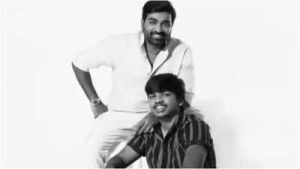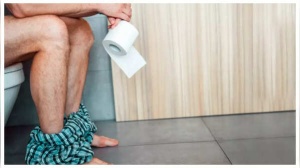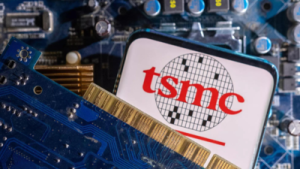Indian cricketer Suryakumar Yadav recently underwent surgery in Europe to address a sports hernia. The 34-year-old announced his successful procedure and ongoing recovery on Instagram, stating, "Life Update : Underwent surgery for a sports hernia in the lower right abdomen. Grateful to share that after a smooth surgery, I’m already on the road to recovery. Can’t wait to be back." But what exactly is a sports hernia, and how does it differ from a regular hernia? Let's explore this condition in detail.

A sports hernia, also known as athletic pubalgia, is a painful injury affecting the soft tissues in the lower abdomen or groin area. Unlike a traditional hernia, a sports hernia doesn't present as a visible bulge. Instead, it involves a tear or strain of muscles, tendons, or ligaments around the groin, leading to persistent pain that intensifies with sudden movements.
Athletes like Suryakumar Yadav, who participate in sports requiring sudden changes in direction, twisting motions, or intense forceful movements, are particularly susceptible to sports hernias. These activities can include batting in cricket, fielding, soccer, football, hockey, and wrestling.
Unlike an inguinal hernia, where an organ or tissue protrudes through a weak muscle resulting in a visible lump, a sports hernia involves a tear or weakness in the muscles or tendons without any noticeable protrusion. This characteristic makes sports hernias challenging to diagnose, yet they cause considerable pain and discomfort, especially during physical activity.
The primary symptom of a sports hernia is pain in the groin or lower abdomen. This pain may appear abruptly during an injury or develop gradually over time due to repetitive movements. Key symptoms to watch for include:

Due to the absence of a bulge and the pain spreading across a wide area, pinpointing the exact location of the hernia can be difficult. The pain from the injury can also cause stiffness and soreness after sports or exercise, hindering continued participation.
A sports hernia results from repetitive movements that strain the muscles and tendons in the lower abdomen and groin. The injury occurs when these soft tissues are stretched or torn due to sudden twisting of the pelvis.
Treatment for a sports hernia depends on the severity of the injury. Available options include:
Avoiding activities that trigger pain, particularly twisting and sudden movements, allows the tissues to heal, although this process can be lengthy.
A structured rehabilitation program focuses on strengthening the abdominal and hip muscles, enhancing flexibility, and correcting muscle imbalances. Physical therapy is often the initial approach.
Nonsteroidal anti-inflammatory drugs (NSAIDs) can help alleviate pain and inflammation, although they do not address the underlying issue.
If symptoms persist, surgery may be necessary to repair the torn tissues. Surgical options include repairing or reinforcing the damaged tendons and muscles around the pubic bone. Surgery typically leads to a successful recovery and a gradual return to sports.
Newer articles
Older articles
 India Enters New Space Age as Astronaut Shukla Joins ISS Mission
India Enters New Space Age as Astronaut Shukla Joins ISS Mission
 X Cracks Down: Half a Million Indian Accounts Suspended for Policy Breaches
X Cracks Down: Half a Million Indian Accounts Suspended for Policy Breaches
 Google Unveils Strategy to Combat Misinformation, Boost Voter Access in India's 2024 Elections
Google Unveils Strategy to Combat Misinformation, Boost Voter Access in India's 2024 Elections
 Hair Oil vs. Hair Serum: Which is the Right Choice for Your Hair?
Alternatively:
Unlock Your Best Hair: Choosing Between Hair Oil and Serum for a Healthy Mane
Hair Oil vs. Hair Serum: Which is the Right Choice for Your Hair?
Alternatively:
Unlock Your Best Hair: Choosing Between Hair Oil and Serum for a Healthy Mane
 Vijay Sethupathi Apologizes Amid Controversy Over Son's Film 'Phoenix'
Vijay Sethupathi Apologizes Amid Controversy Over Son's Film 'Phoenix'
 Bollywood's 'Swades' Anthem Joins Axiom-4 Mission: Indian Astronaut's Playlist Honors Heritage in Space
Bollywood's 'Swades' Anthem Joins Axiom-4 Mission: Indian Astronaut's Playlist Honors Heritage in Space
 New York Assemblyman Zohran Mamdani's Style: 5 Lessons in Authenticity and Heritage
New York Assemblyman Zohran Mamdani's Style: 5 Lessons in Authenticity and Heritage
 Colon Cancer: Don't Ignore These 5 Early Warning Signs
Colon Cancer: Don't Ignore These 5 Early Warning Signs
 TSMC Regains Top 10 Global Value Ranking Amid AI Boom
TSMC Regains Top 10 Global Value Ranking Amid AI Boom
 Android Users Urged to Update Devices Amid High-Severity Security Flaws: Government Issues Warning
Android Users Urged to Update Devices Amid High-Severity Security Flaws: Government Issues Warning